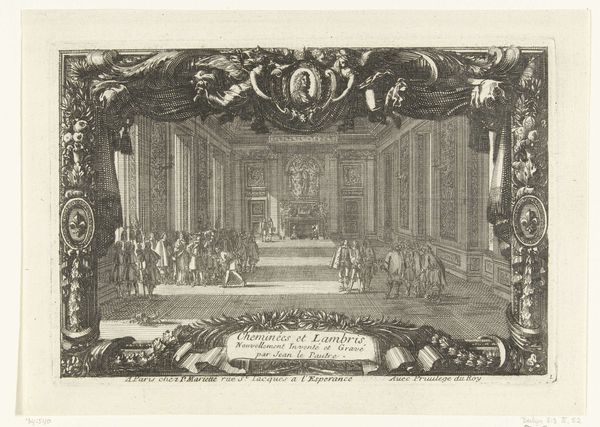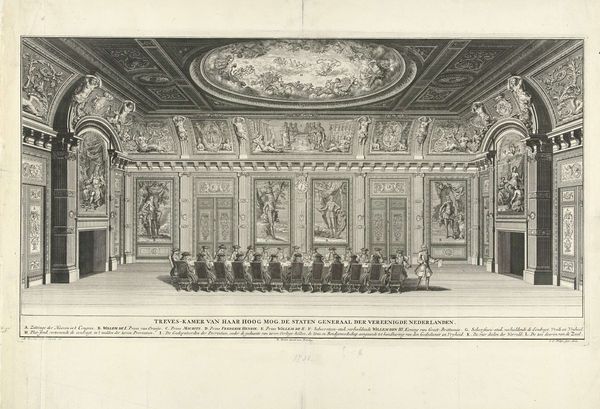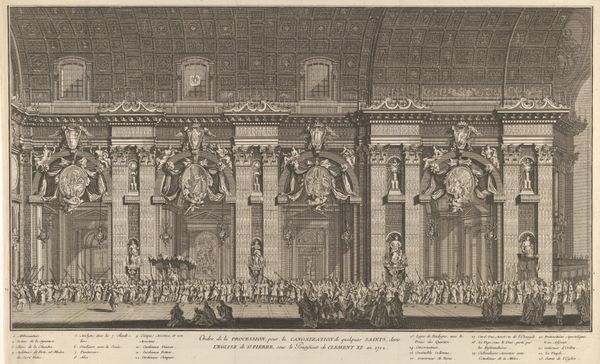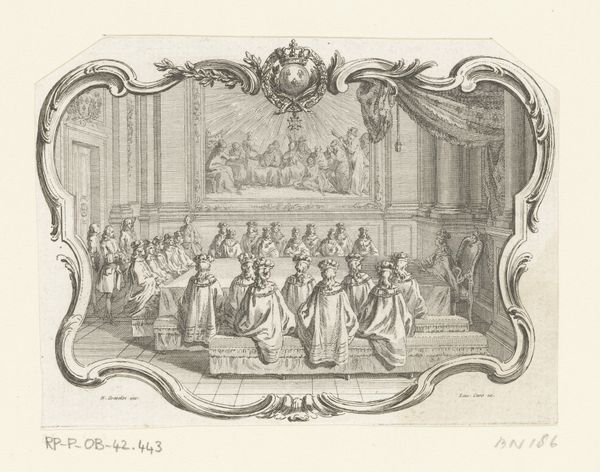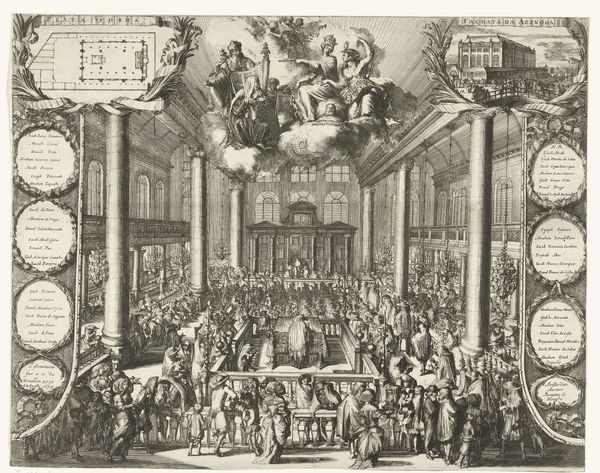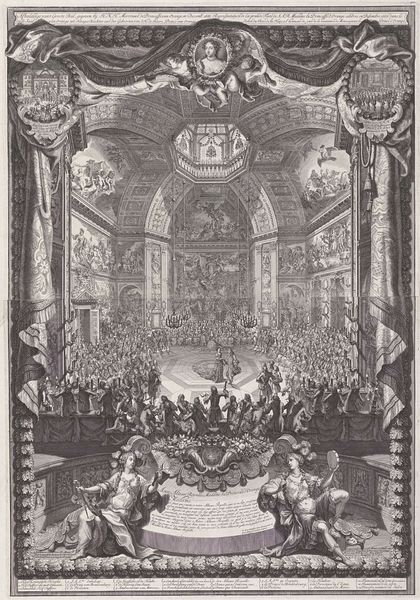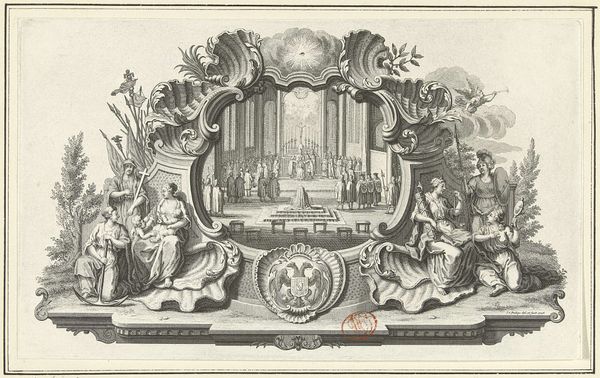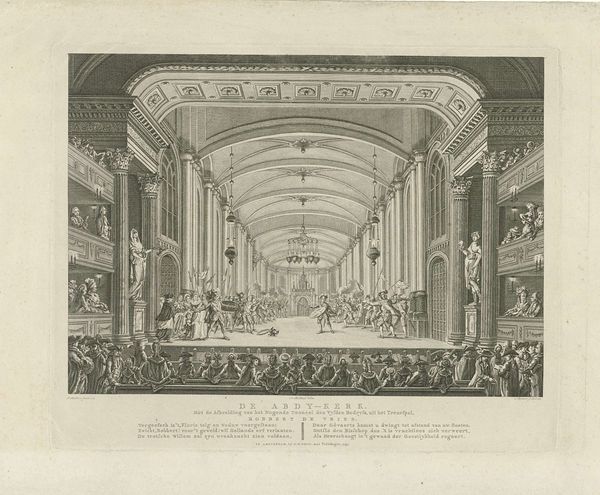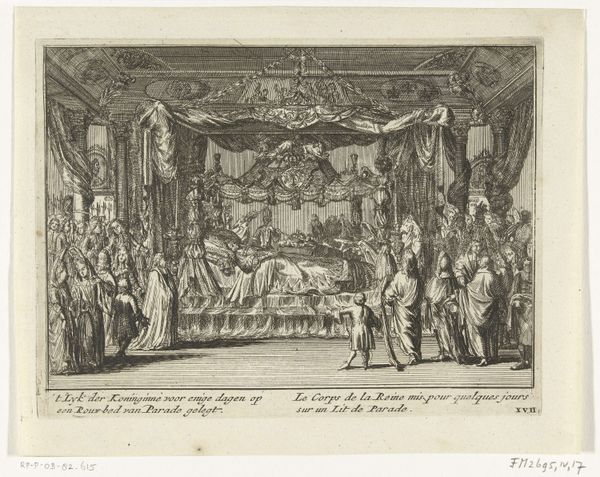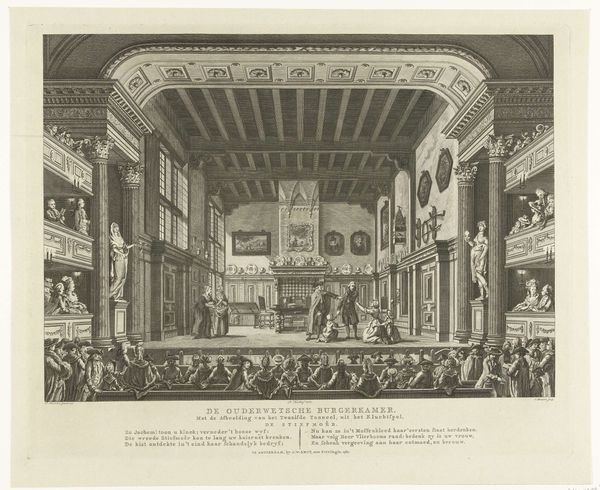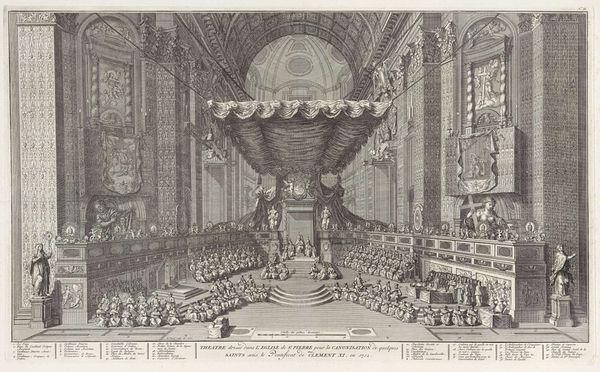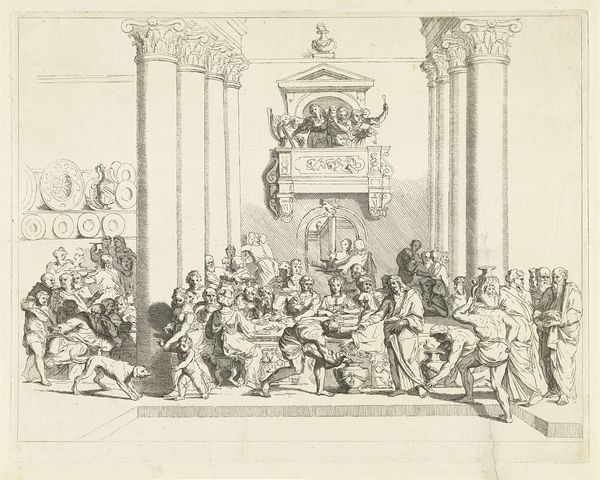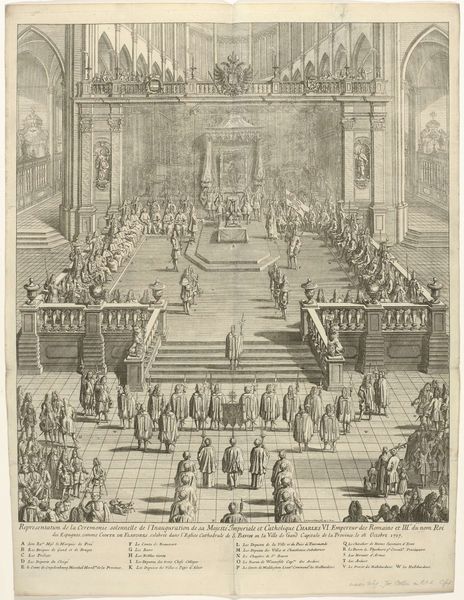
De opening van de nieuwe audiëntiezaal van de Staten-Generaal (Trêveszaal), 1697 after 1697
0:00
0:00
print, engraving, architecture
#
baroque
# print
#
old engraving style
#
line
#
cityscape
#
engraving
#
architecture
Dimensions: height 424 mm, width 696 mm
Copyright: Rijks Museum: Open Domain
Editor: This engraving by Daniël Marot, created after 1697, depicts "The opening of the new audience hall of the States General," or Trêveszaal. It’s incredibly detailed! The room is packed, yet there's an overall feeling of formality and grandeur. What stands out to you? Curator: For me, it's the sheer density of symbolism. Look at how the architecture itself – the statues, the ceiling frescoes – visually reinforces the power and authority being enacted in this space. Even the act of depicting this event as an engraving solidifies its importance within the cultural memory of the Dutch Republic. Do you notice any particular symbols that repeat? Editor: The Dutch lion crest is everywhere! And the banners up top have all sorts of emblems, although it's hard to make them out clearly in the engraving. What do these visual repetitions mean in the cultural memory you're referring to? Curator: Think about what the lion traditionally represents: courage, strength, national pride. By prominently featuring it throughout the image, Marot is creating a powerful statement about the Dutch Republic’s self-image, as perceived during that period. And what feelings would this artwork inspire? Editor: Pride, definitely. Also a sense of order, with everyone in their place. It makes me think about how carefully constructed images can be for communicating authority. Curator: Exactly! And consider the power of the engraving medium itself: easily reproducible, widely distributed. It allowed this image, and the message it carried, to reach a broad audience, reinforcing those symbols across society. Editor: So it’s not just a record of an event, it’s active propaganda? Curator: In a way, yes. Every element – from the lion to the architecture, the sheer number of people present – serves to construct a particular narrative about Dutch power and prestige. The emotional weight that symbols gain over time solidifies cultural meaning and helps preserve political continuity. Editor: That's fascinating. I had been mostly looking at the scene itself. Now I can appreciate how carefully designed this image is to create a lasting impression and convey political ideals.
Comments
No comments
Be the first to comment and join the conversation on the ultimate creative platform.
